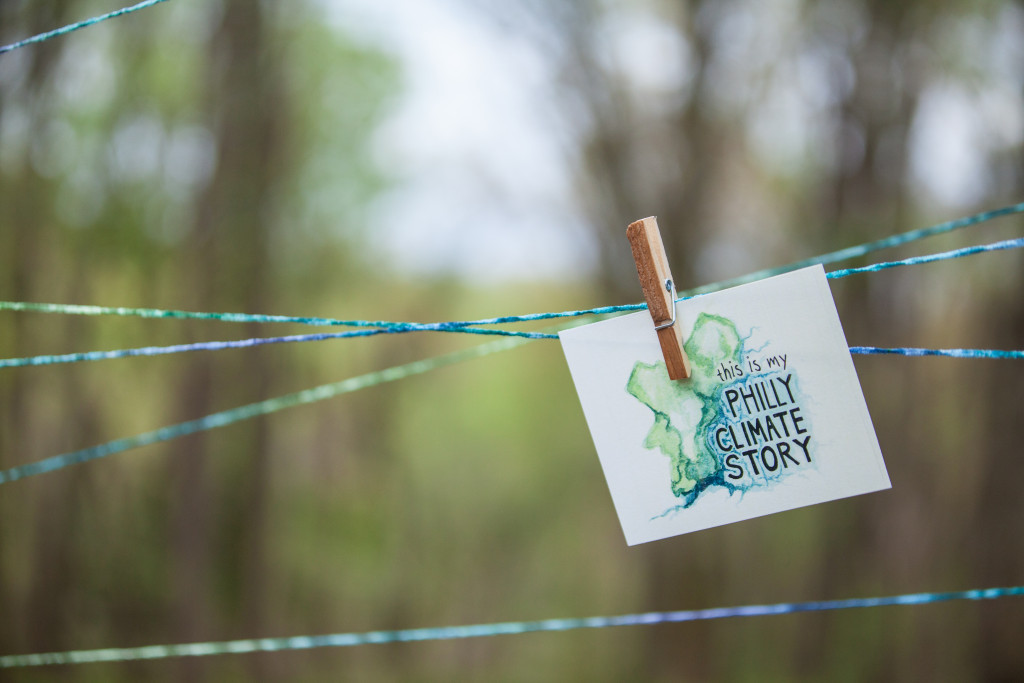When I go for a nature walk in a local forest, I see trees, birds, flowers, deer.
Not photographer Willard Terry.
When he goes for a walk — which he does a lot — he sees faces, lots of faces, incredible faces. Gnomes, ghosts, demons, animals, dinosaurs, people, aliens, all staring at him from tree trunks, tree roots, broken branches, gnarly bark, rock walls, even fence posts and barn siding.
Amazingly, once you start looking for them, there are faces everywhere.
And Terry has been photographing them.
He just published a book, “Pareidolia: Spirits and Faces of the Wissahickon and Schuylkill Valleys,” which will soon be available in the Schuylkill Center’s gift shop (and on Terry’s website as soon as he sets one up). The book’s title, pronounced parr-i-DOH-li-ah, while a mouthful, is the phenomenon in psychology whereby people see patterns in inanimate objects — like trees — and turn them into things they are not. The Man in the Moon is perhaps the best known example of pareidolia.
I visited Terry in his Port Royal Avenue home just before the winter solstice, where the retired school teacher — he taught at Germantown Friends for 30 years — was preparing for his annual solstice party. His wife, Holly, also a retired school teacher, also a veteran of Quaker schools (she at Plymouth Meeting Friends), were preparing for a celebration with their three sons, all of whom work in the arts.
They’ve lived in their 1840s-era home for more than 30 years and have been careful and conscious stewards of their historic home and barn. But they’ve brought that home into a greener future, their front porch including a portable hoop garden bed where the couple is growing salad greens — in December — and their wood stove reduces their reliance on fossil fuels, which is admirable.
Terry walks “seven or eight miles a day, consistently over 50 miles a week,” he told me, much of it at the Schuylkill Center’s sprawling property across the street and along the Wissahickon.
“Years before I retired, I used to run,” he said, but after an injury forced him to reconsider that activity, “now I walk a lot, and walking has made me more observant.”
He took me and his dog, Lily, to visit a maple tree at the Schuylkill Center just off Port Royal, where he had his “aha moment.” He had walked past this tree many times, but one day, the wizened face of a gnome frowning at him “just popped out at me,” as the bark’s bumps and gnarls formed a cranky face. He’s since photographed the maple many times and in the book includes a photo of the tree in winter, a dusting of snow giving his gnome a bad case of dandruff. The book’s bio page features an action shot his son took of Terry photographing the gnome.
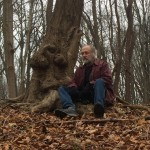
Photographer Willard Terry pauses on his walk next to the maple tree that started it all, the one with the gnarly gnomish face
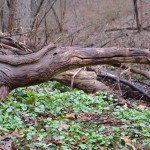
Willard Terry sees an anteater in this branch
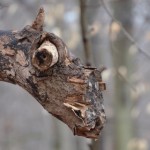
Where Terry sees a unicorn, the author sees a camel. What do you see?
“Once I started photographing faces,” he reflected, “I became more aware of them. You’re sort of half looking, but then they jump out at you like a guy is suddenly staring at you.”
For example, he points to a Tyrannosaurus-shaped branch he’s walked by hundreds of times on the opposite side of Port Royal from his gnome tree — and suddenly he saw it, T. rex in profile.
When I asked him about the Freudian nature of seeing faces where none existed, he laughed.
“I looked this up on the internet,” he offered, always a dangerous thing to do, “and saw that while some people see this as a sign of instability, others see a more creative mind at work.”
(For the record, I’m going with the latter.)
He also noted it’s a bit of a Rorschach, like a photo he calls “Duck Dinner,” where two mallards on a pond look to me like they’re about to be eaten by a plesiosaur, an extinct reptile, but others see the branch emerging ominously from the water as just another duck. Not sure what this says about me … a sign of my own instability?
His photography embraces more than pareidolia.
“I’m interested in portraits and landscapes,” he said, “where I like to look for patterns,” like a photo he showed me of sycamore bark, its jigsaw puzzle-patterned bark always a favorite of mine.
He also loves to add a sense of humor to his work, like a framed color landscape photo in his home of a Mail Pouch tobacco ad painted on the side of a Pennsylvania barn, smoke rising from the barn as if it were a giant chimney — which it clearly is not. But hidden behind the barn is the cooling tower of the Limerick nuclear power plant, steam rising from it creating the optical illusion of the barn as a chimney.
While he first taught a sixth-grade class and then seventh-grade English, in retirement, he’s teaching a black-and-white film photography course back at Germantown Friends.
“The kids have never seen film before,” he chuckled. “They have no idea what it is.”
His pareidolia photographs have been displayed before and will appear in the Schuylkill Center’s upcoming “Community” exhibition later this winter. We hope you come see them then.
Meanwhile, Willard Terry will continue walking 50 miles a week in natural areas, finding faces where less creative people like me simply see bark and branches.

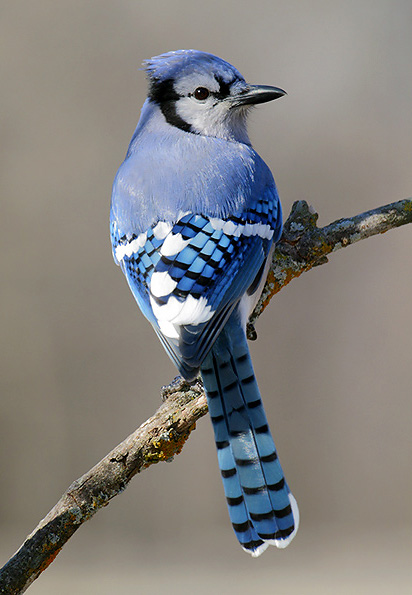
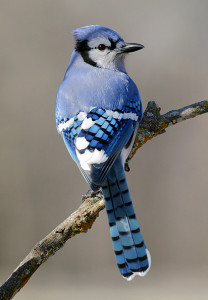
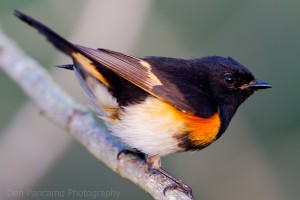
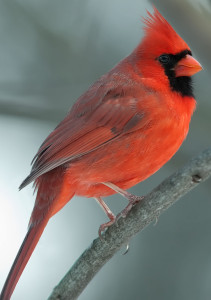
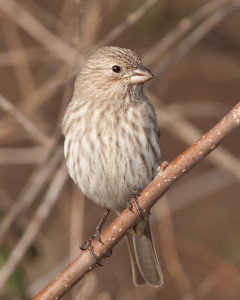
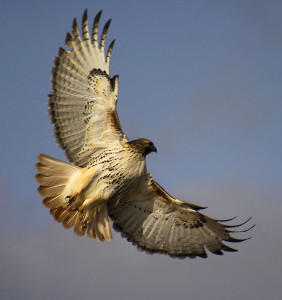
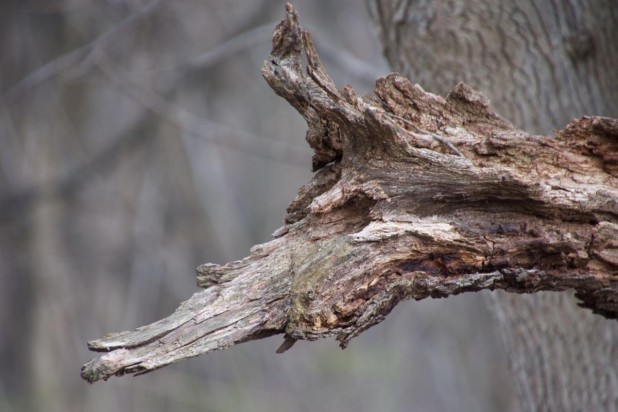



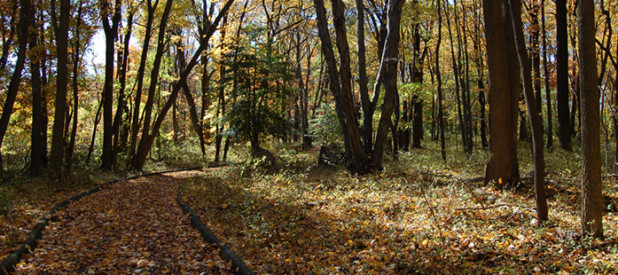
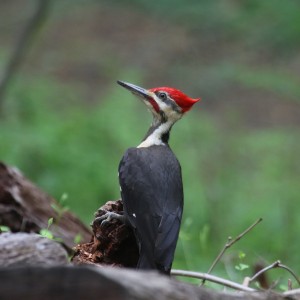
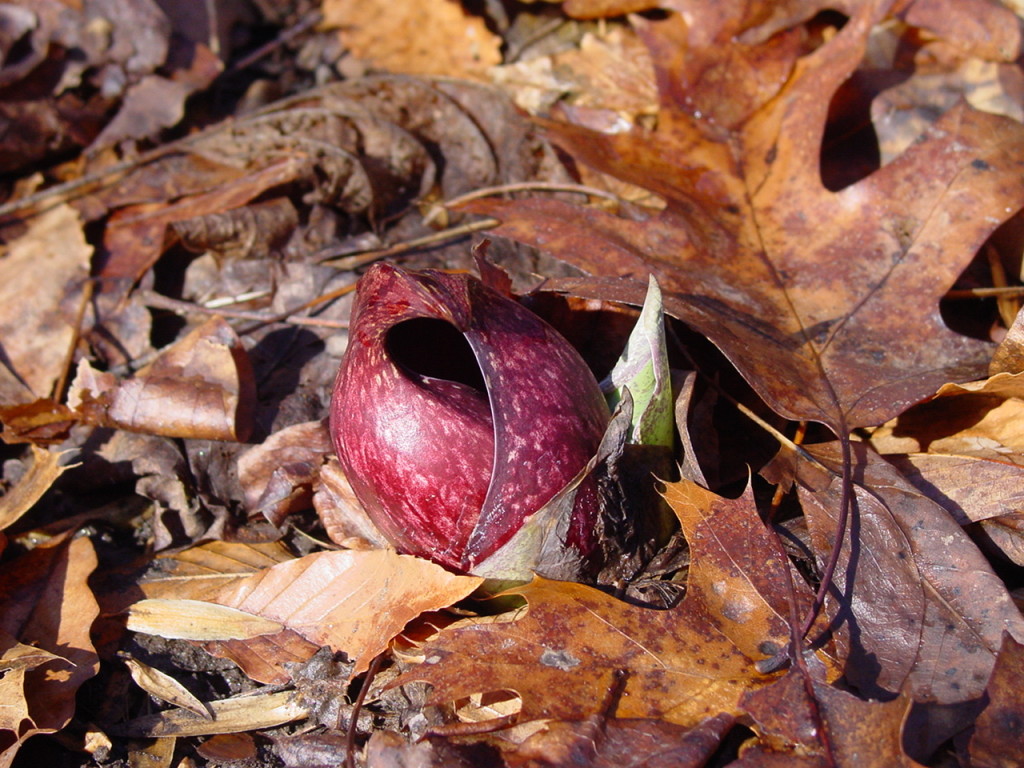
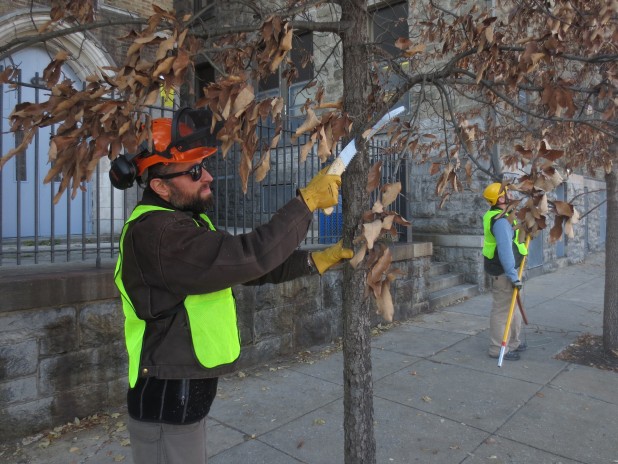
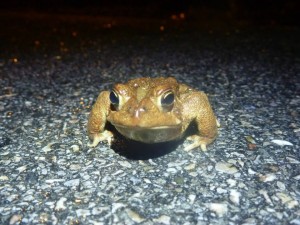 It’s early spring, just around sunset, and the conditions are just right—55 degrees and humid. A high-pitched trilling rings out in the distance. The shallow water of the Upper Roxborough Reservoir Preserve stirs with excitement. The toads of Roxborough are ready to run—and ready to attract a mate.
It’s early spring, just around sunset, and the conditions are just right—55 degrees and humid. A high-pitched trilling rings out in the distance. The shallow water of the Upper Roxborough Reservoir Preserve stirs with excitement. The toads of Roxborough are ready to run—and ready to attract a mate.
 Founder of the incredibly successful
Founder of the incredibly successful 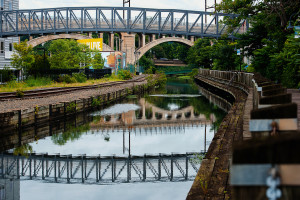 “I am deeply honored by the recognition for the work we all have done,” Kay said. “I say this because I feel that I am more a facilitator for the people who care about trails, nature, and greening. If people didn’t care the work never would have succeeded.”
“I am deeply honored by the recognition for the work we all have done,” Kay said. “I say this because I feel that I am more a facilitator for the people who care about trails, nature, and greening. If people didn’t care the work never would have succeeded.” 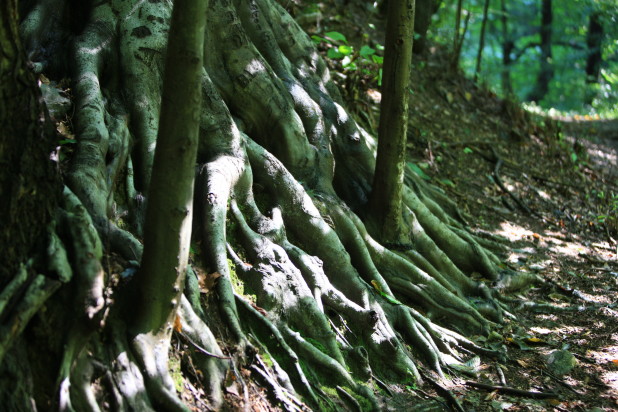
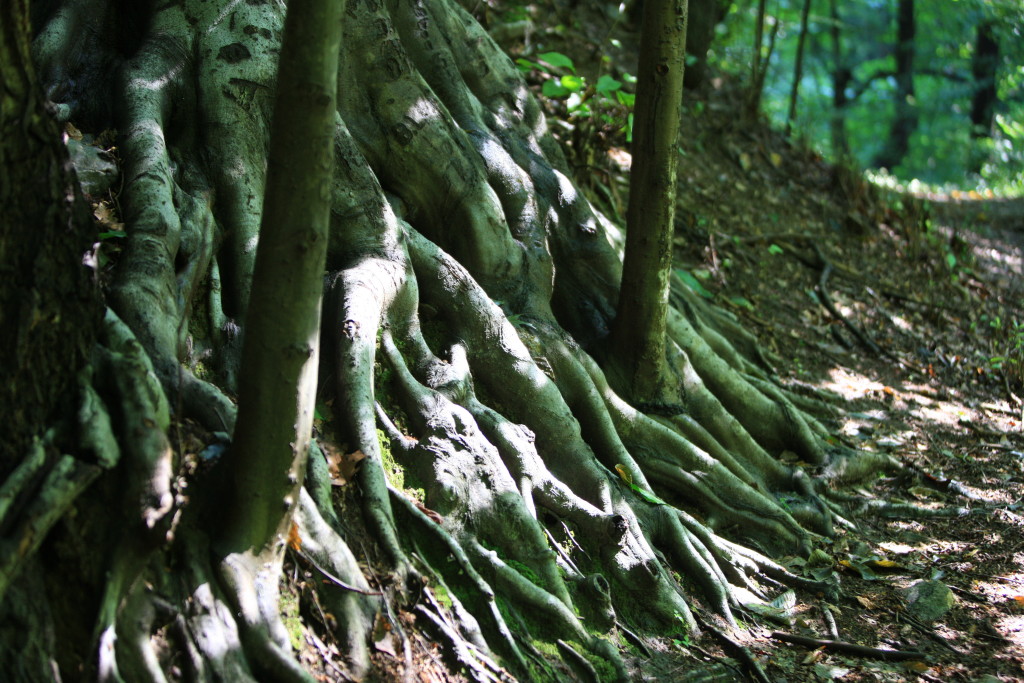
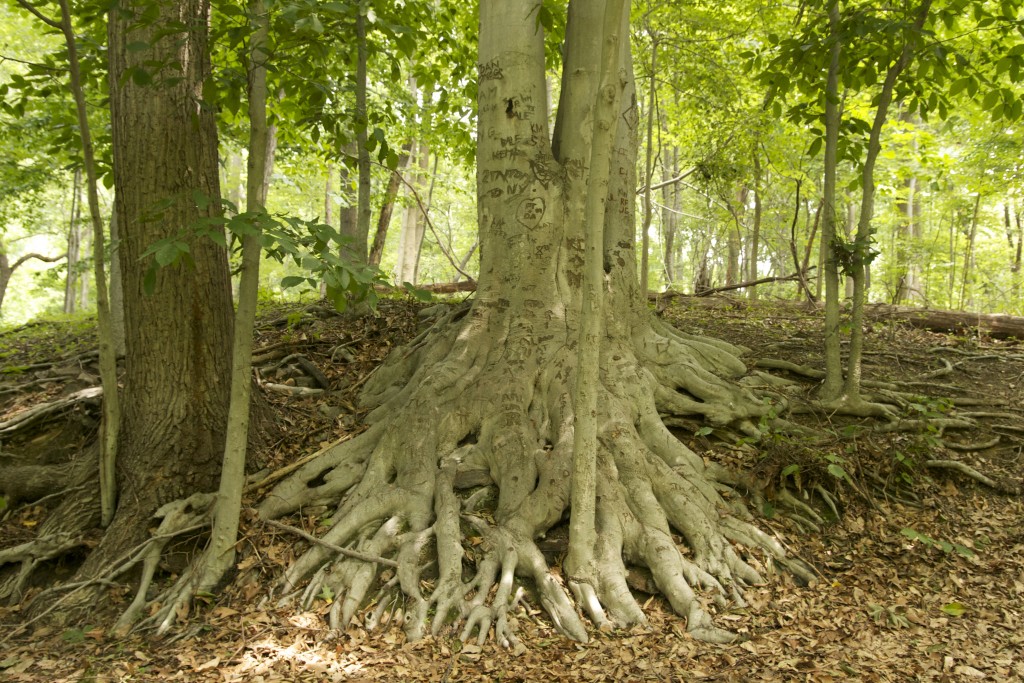
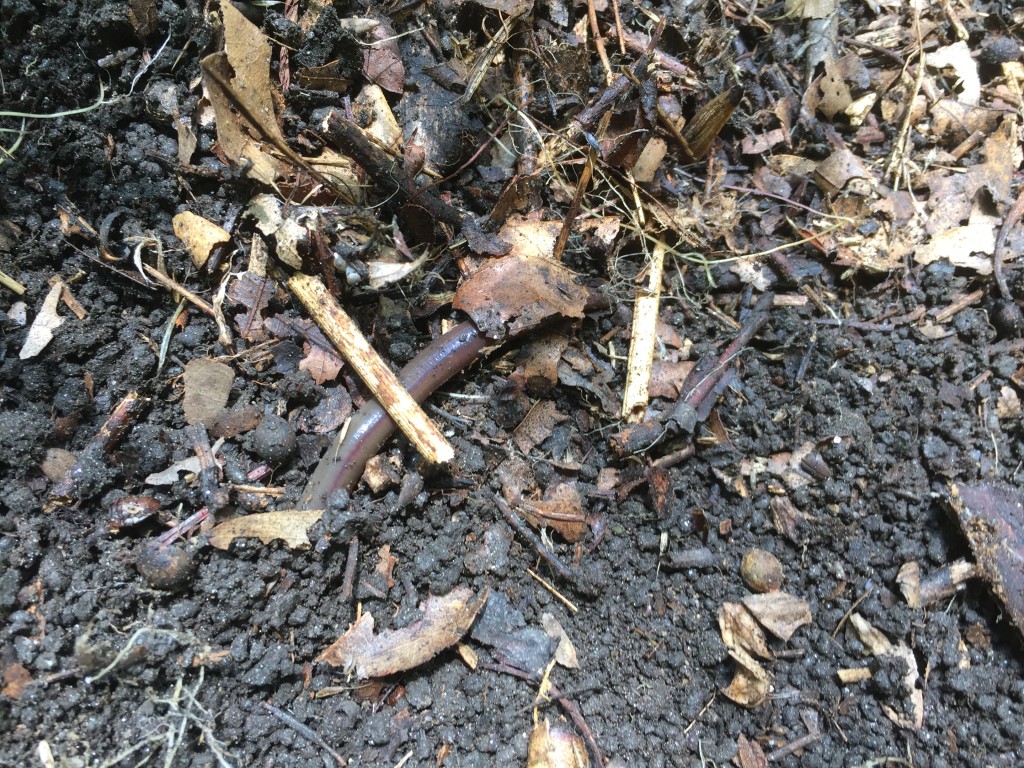
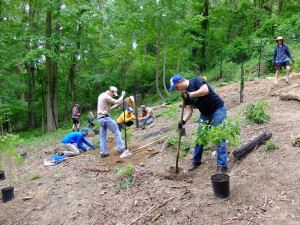
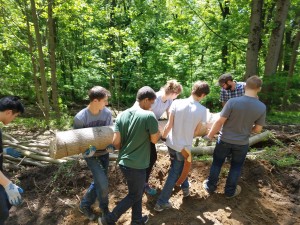 We can address these problems by improving the soil and providing the roots of trees with a healthy environment to grow and develop. In our Fox Glen restoration site, as we planted new trees we covered the ground around them with wood chips to help the roots retain moisture. The wood chips will break down over time and add to the organic content of the soil.
We can address these problems by improving the soil and providing the roots of trees with a healthy environment to grow and develop. In our Fox Glen restoration site, as we planted new trees we covered the ground around them with wood chips to help the roots retain moisture. The wood chips will break down over time and add to the organic content of the soil. 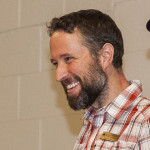 Andrew has a master’s degree in landscape architecture and ecological restoration from Temple University. He hiked the Appalachian Trail from Georgia to Maine in 2005-2006.
Andrew has a master’s degree in landscape architecture and ecological restoration from Temple University. He hiked the Appalachian Trail from Georgia to Maine in 2005-2006.